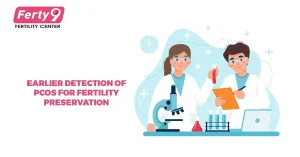Fertility preservation plays a major role in family planning, as childbearing is much desired by childless couples and even otherwise. Consulting the doctor is important while planning a family.
Fertility preservation does save one’s embryos, eggs, sperm, as well as reproductive tissues. This does help make it possible for the person to have a child sometime in the future. It is indeed an option for adults and even a few children of both sexes. Family planning is an essential component of family preservation.
People with certain diseases and disorders, as well as life events that do affect fertility, can benefit from fertility preservation. These include people who:
- Have rather been exposed to toxic chemicals in the workplace or during military duty.
- Have endometriosis.
- Have uterine fibroids.
- Are about to be treated for cancer.
- Are to be treated for an autoimmune disease, like lupus.
- Have a genetic disease that does affect future fertility.
- Delay in having children.
A number of fertility-preserving options are, of course, available.
Related Read: Ferty9’s promise of affordability
Suggested read: How the First IVF Baby Changed Perceptions of Infertility
Fertility-preserving options for males include:
Sperm cryopreservation (pronounced krahy-oh-prez-er-VEY-shuhn) – In this process, a male tends to provide samples of his semen. The semen is then frozen and further stored for future use in a process known as cryopreservation.
- Gonadal shielding – Radiation treatment for cancer and other conditions can harm fertility, especially if used in the pelvic area. Few radiation treatments use modern techniques in order to aim the rays at a minimal area. The testicles can indeed be protected with a lead shield.
Also read: Freezing Sperm Reasons, Procedure, Outcomes, and Costs
Fertility-preserving options for females include:
- Embryo cryopreservation – This method, also known as embryo freezing, happens to be the most common as well as successful option for preserving a female’s fertility. To start with, a healthcare provider does remove eggs from a woman’s ovaries. The eggs are then fertilized with the help of the sperm from her partner or a donor in a lab, in a process known as in vitro fertilization. The resulting embryos are then frozen and stored for future use.
- Oocyte (pronounced OH-uh-sahyt) cryopreservation – This option is similar to embryo cryopreservation, except that the unfertilized eggs are, of course, frozen and then stored.
- Gonadal shielding – This process is much like gonadal shielding for males. Steps are taken, such as aiming rays at a small area or covering the pelvic area with a lead shield, in order to protect the ovaries from radiation.
- Ovarian transposition – A health care provider does perform minor surgery in order to move the ovaries and sometimes the fallopian tubes from the area that would rather receive radiation to an area that would not otherwise receive radiation. For example, it can be relocated to an area of the abdomen wall that will not really receive radiation.
Few of these options, like sperm, oocytes, and embryo cryopreservation, are no doubt available only to males as well as females who have gone through puberty and have mature sperm and eggs. However, gonadal shielding and ovarian transposition can be used to preserve fertility in children who have not gone through puberty.
If you have any questions about fertility preservation, it is better to discuss them with the health care provider.
Fertility is considered an important aspect of a better life. Infertility is associated with a greater risk of depression, anxiety, grief, low self-esteem, and poor sexual well-being. Having fertility preservation (FP) possibilities at their disposal can provide new hope to patients, but decision-making about the various FP options is challenging. Also, fertility counseling with a specialist in reproductive medicine helps and aids decisions, which is certainly a complement to decision-making.
Related read: Freezing Eggs: Procedure, Cost, and Anticipations
Conclusion
Fertility concerns extend beyond the termination of cancer treatment, and counseling needs to be offered beyond the acute phase. As part of a comprehensive care plan that starts at diagnosis and continues until cancer survivors can accomplish their family planning, fertility concerns need to be addressed during follow-up consultations. A multidisciplinary approach is no doubt seen as the best way to meet patients’ needs with regard to fertility concerns.





























